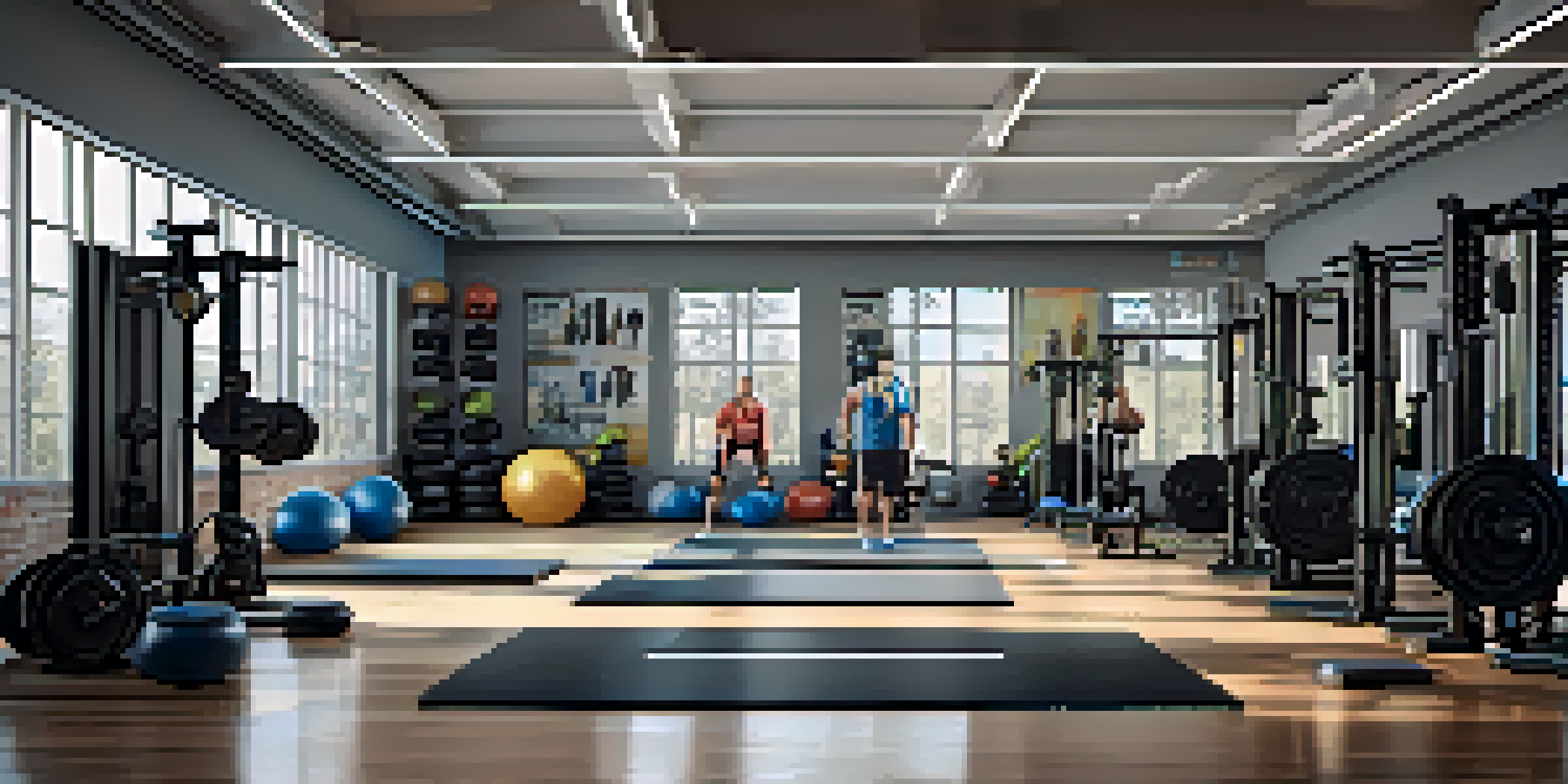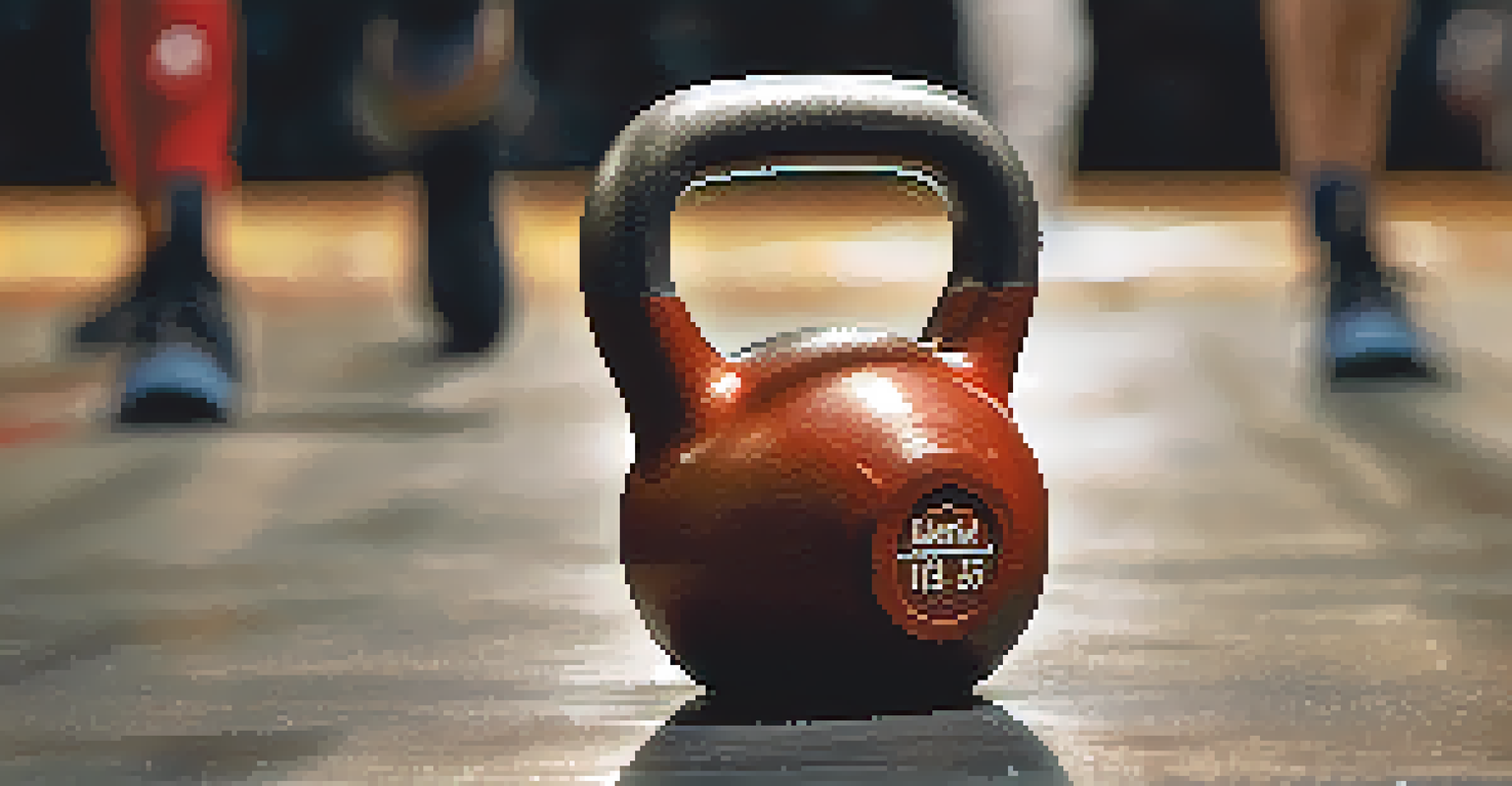Designing a Functional Bodybuilding Program for Athletes

Understanding the Basics of Functional Bodybuilding
Functional bodybuilding combines traditional strength training with movements that enhance athletic performance. Unlike typical bodybuilding, which focuses solely on aesthetics, functional bodybuilding emphasizes strength, stability, and mobility. This makes it ideal for athletes who need to perform well in their respective sports.
The only bad workout is the one that didn't happen.
At its core, functional bodybuilding encourages exercises that mimic real-life movements, promoting better overall body coordination. Think of it as training your body to be a well-oiled machine, ready to tackle any physical challenge. By integrating these movements, athletes can improve not just their physique, but also their efficiency in their sport.
When designing a program, it's essential to understand the specific demands of the athlete's sport. For example, a sprinter may require explosive power and speed, while a football lineman may need overall strength and stability. Recognizing these needs allows for tailored workouts that deliver results.
Assessing the Athlete's Current Fitness Level
Before diving into a functional bodybuilding program, it's crucial to assess the athlete's current fitness level. This initial evaluation can include strength tests, flexibility assessments, and movement screenings to identify any areas of improvement. Understanding their baseline helps in crafting a personalized program that promotes growth and minimizes injury risk.

For instance, an athlete who struggles with overhead movements may need additional shoulder mobility work incorporated into their routine. Similarly, evaluating their core strength can inform how much focus should be placed on stability exercises. This personalized approach ensures that the program addresses specific weaknesses while enhancing strengths.
Focus on Real-Life Movements
Functional bodybuilding emphasizes exercises that mimic everyday activities, enhancing overall body coordination and athletic efficiency.
Regular assessments should be built into the program to track progress over time. This can inspire athletes by showcasing improvements, while also providing data to adjust their training as needed. An ongoing evaluation process helps maintain motivation and keeps the training aligned with their evolving needs.
Setting Goals for Functional Bodybuilding Training
Goal setting is a fundamental aspect of any training program, and functional bodybuilding is no exception. For athletes, goals should be specific, measurable, achievable, relevant, and time-bound (SMART). This clarity helps in focusing their efforts and provides a roadmap for their training journey.
Strength does not come from physical capacity. It comes from an indomitable will.
For instance, an athlete might set a goal to increase their squat strength by 15% over the next three months. This not only gives them a target to aim for but also allows for tracking progress along the way. Having clear goals can significantly enhance motivation and commitment to the program.
Additionally, it's important to set both short-term and long-term goals. Short-term goals can provide quick wins that keep athletes engaged, while long-term goals help maintain vision and purpose in their training. Balancing both types of goals ensures a steady progression without overwhelming the athlete.
Incorporating Key Exercises into the Program
When designing a functional bodybuilding program, incorporating key exercises is essential for building strength and endurance. Movements like squats, deadlifts, and bench presses form the foundation, as they engage multiple muscle groups and improve overall functional strength. These compound movements are particularly beneficial for athletes looking to enhance their performance.
In addition to traditional lifts, it's important to include dynamic exercises that simulate sports-specific movements. For example, incorporating kettlebell swings can improve hip explosiveness, vital for athletes in sprinting or jumping sports. This not only builds strength but also trains the body to move efficiently in a way that translates to performance.
Assess and Personalize Training
Evaluating an athlete's current fitness level allows for tailored programs that target specific weaknesses and enhance strengths.
Variety is crucial in maintaining engagement and preventing plateaus. Incorporating different modalities, like resistance bands or bodyweight exercises, can challenge the body in new ways. This dynamic approach keeps workouts fresh and encourages athletes to push their limits.
Balancing Strength and Conditioning in Training
Balancing strength and conditioning is key to a successful functional bodybuilding program. While strength training focuses on building muscle and power, conditioning enhances endurance and cardiovascular fitness. Both aspects are vital for athletes, as they need to perform at high levels for extended periods during competitions.
A well-rounded program might include strength training on certain days, followed by conditioning workouts on others. For instance, an athlete could focus on heavy lifting early in the week and then incorporate high-intensity interval training (HIIT) later on. This ensures that they’re not only getting stronger but also improving their overall fitness.
It's also important to listen to the body's signals. If an athlete feels fatigued or overworked, it might be wise to adjust the balance between strength and conditioning. This adaptability helps prevent injuries and keeps the athlete performing at their best.
Implementing Recovery Strategies for Optimal Performance
Recovery is often overlooked but is crucial for any athlete's training regimen. Proper recovery strategies can prevent injuries and enhance overall performance. Incorporating days off, active recovery sessions, and techniques like stretching and foam rolling can significantly contribute to an athlete’s progress.
For instance, after a heavy lifting session, an athlete might benefit from a day of light activity, like walking or swimming, which promotes blood flow without adding stress to the muscles. Additionally, ensuring adequate sleep and nutrition plays a critical role in recovery, as the body repairs and rebuilds muscle tissue during rest.
Recovery is Key to Performance
Incorporating effective recovery strategies is essential for preventing injuries and maximizing athletic performance.
Monitoring recovery can be as simple as keeping track of how the athlete feels during workouts. If they’re consistently tired or unable to perform at their usual level, it may be time to reassess their recovery strategies. Prioritizing recovery not only improves performance but also promotes long-term athletic longevity.
Evaluating Progress and Making Adjustments
Evaluating progress is essential in any functional bodybuilding program, as it helps determine if the training is effective. Regularly tracking key performance indicators, such as strength gains, endurance improvements, and overall fitness levels, allows athletes to see how far they've come. This reflection can be incredibly motivating and provides valuable insights for future training.
If progress stalls, it may be necessary to make adjustments to the program. This could mean altering the exercise selection, changing training volume, or even adjusting recovery strategies. The key is to remain flexible and willing to adapt to the athlete's changing needs.

Incorporating feedback from the athlete is also crucial. Open communication helps understand their experiences, preferences, and any challenges they might face. This collaborative approach ensures that the program remains effective and enjoyable, ultimately leading to better results.